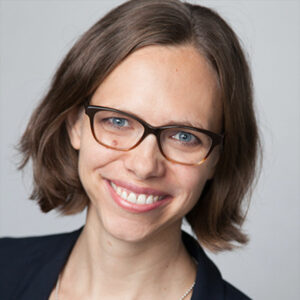
Prof. Dr. Karen Alim · CPTS
Max Planck Institute for Dynamics and Self-Organization · Göttingen, Germany
Biography
Karen Alim studied physics in Karlsruhe, Manchester and Munich. She obtained an MSc in Theoretical Physics in 2004 working with Alan J. Bray from Manchester University, U.K., followed by a Diplom (MSc) in Physics and Biophysics at the LMU Munich. During her PhD with Erwin Frey at the LMU in Munich she investigated the form of biological materials like DNA/actin and patterning mechanism during leaf development. As a grad fellow at the KITP in Santa Barbara, United States, she investigated the mechanics of plant growth. After her doctoral degree in 2010 she joined Michael P. Brenner’s group at Harvard University where she focused on the adaptation dynamics of the network-like forager Physarum polycephalum. In 2015 she started as an independent group leader at the Max Planck Institute for Dynamics and Self-Organization. In 2019 she joined the Technical University of Munich as a permanent professor. Karen is recipient of the John Birks Award of Manchester University and held an appointment as lecturer in Applied Mathematics at Harvard University.
Education and positions held
- 2019 – present
- Professor (W3) · Technical University of Munich
- 2015 – 2022
- Max Planck Research Group Leader · Max Planck Institute for Dynamics and Self-Organization Germany · Göttingen
- 2010 – 2015
- PostDoc · Harvard University · Area of Applied Mathematics · Brenner
United States · Cambridge
- PostDoc · Harvard University · Area of Applied Mathematics · Brenner
- 2009
- Grad Fellow · University of California, Santa Barbara · Kavli Institute for Theoretical Physics
- 2006 –2010
- Ludwig-Maximilians-University of Munich · Theoretical Physics · Dr. rer. nat (PhD) · Germany · Munich
- 2003 – 2004
- The University of Manchester · Theoretical Physics · Master of Science · United Kingdom · Manchester
- 2002 –2006
- Ludwig-Maximilians-University of Munich · Physics and Biophysics · Diplom · Germany · Munich
- 2000 –2002
- Karlsruhe Institute of Technology · Physics · Vordiplom · Germany · Karlsruhe
Research Summary
I aim to identify the physical principles governing how flow and active, living matter feed back onto each other and thus regulate the architecture of vascular networks and their function. Within a tube-like network, flows are inherently coupled. Thus, local changes in tube diameter alter transport and flows throughout the network. Predicting this feed back, in particular accounting for the active response of the network tubes themselves, is my challenge. Solving this fundamental problem is not only of medical relevance for vascular and the many other tube-like networks in the human body, but also a fundamental step to develop new design principles for robotic and self-organized systems in bioengineering or fuel cells.
Key publications
- F.J. Meigel, P. Cha, M.P. Brenner, K. Alim
Robust increase in supply by vessel dilation in globally coupled microvasculature
Phys. Rev. Lett., 123, 228103 (2019) - J.-D. Julien, K. Alim
Oscillatory fluid flow drives scaling of contraction wave with system size
Proc. Natl. Acad. Sci. U.S.A., 115, 10612–10617 (2018) - K. Alim, S. Parsa, D.A. Weitz, M.P. Brenner
Local pore size correlations determine flow distributions in porous media
Phys. Rev. Lett., 119, 144501 (2017) - K. Alim*, G. Amselem*, F. Peaudecerf, M.P. Brenner and A. Pringle
Random network peristalsis in Physarum polycephalum organizes fluid flows across an individual. *authors contributed equally
Proc. Natl. Acad. Sci. U.S.A., 110(33), 13306-13311 (2013) - M. Uyttewaal*, A. Burian*, K. Alim*, B. Landrein, D. Borowska-Wysket, A. Dedieu, M. Ludynia, J. Traas, A. Boudaoud, D. Kwiatkowska and O. Hamant
A katanin-dependent microtubule response to mechanical stress enhances growth gradients between neighboring cells in Arabidopsis. *authors contributed equally
Cell, 149, 439-451 (2012)
